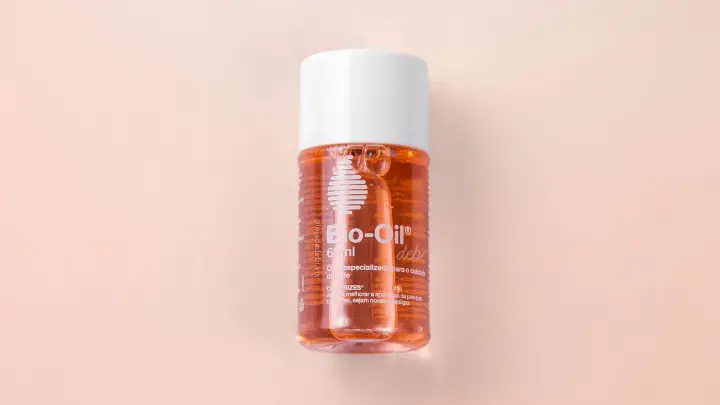Dead skin- thick dead skin on the foot can be a problem for everyone, especially females. You can call it a spoiler when you just want to show your beautifully cured toenails in a pair of sandals. Not to worry anymore, this article has a list of effective ways to exfoliate your foot.
Dry, scaly heels are not considered a health condition. Therefore, it is not always traceable to any deficiency or symptom of an illness. It can be caused tool long hot baths, stress, dry skin, and sometimes, athlete’s foot.
Continue reading to see a list of inexpensive ways to exfoliate your foot and get rid of the thick skin that has always spoilt your fun.
1. Scrub off Thick Skin With a Pumice Stone or Foot File
Pumice stones and foot files are common mechanical ways people exfoliate their feet. They are less aggressive compared to some foot brushes and they are easy to use. You can use a pumice stone or foot file during or after a bath.
Follow this direction to use a pumice stone or foot file to exfoliate your foot:
- Soak your feet in warm water; you may go one foot at a time
- Leave it in the water for up to 10-15 minutes to get the skin around there to be soft as possible
- When the time is over, bring out your feet and towel them dry to moistness
- Thereafter, take the stone or file and begin to scrub each foot gently. Use the stone in circular motions and the file in back-and-forth motions
- While you scrub, you’ll see the thick skin loosen and fall off. You can take brief pauses to avoid tears or weakening the skin
- Scrub until you’re satisfied with what you see and feel
- Afterward, rinse your feet and apply a moisturizing cream or oil
2. Try a Foot Scrub Recipe
Foot scrubs are also used to exfoliate the foot when they begin to get thick with dead skin cells. There are several foot scrubs recipes, and they make use of simple and accessible kitchen ingredients.
Foot scrubs can be very drying on the skin. Therefore, when you use a foot scrub, you should add hydrating ingredients like oils and spices to prevent further drying. You can try any of the three recipes below:
Milk and salt scrub
Materials: ½ cup of milk, 3-4 cups of warm water, 3 tablespoons of salt, ½ cup of baby oil, pumice stone, and acne pads (salicylic acid will be better). You can modify your scrub around these measurements
How to:
- This scrub is best used in the evenings
- Mix the milk and warm water in a wide basin that can take both feet and soak your feet in the solution for up to 10 minutes
- While your feet are soaking, mix the oil and salt in a small bowl. Mix to form a paste and rub it on your feet when the time elapses
- Then, use the pumice stone to exfoliate each foot in gentle circular motions
- Afterward, rinse off the loosened skin and dry it with a clean towel
- Apply the acne pads all over your foot and follow up with petroleum jelly to replenish moisture
- Wear a pair of thick socks on your feet to keep them moist
- Rinse off the jelly in the morning
Honey and shea butter scrub
Materials: 6 tablespoons of honey, ½ cup of shea butter, 3 tablespoons of sea salt
How to:
- Mix the salt and shea butter in a clean bowl to make a paste
- Then, add the honey and mix well
- Use the paste to scrub your feet gently
- Afterward, rinse off the paste and dry your feet
- You can do this every night and cover your feet in thick socks overnight
Coffee scrub
Materials: 1 cup of coffee powder, ½ cup of brown sugar, 1 cup of coconut oil, 1 teaspoon of vanilla extract
How to:
- Warm the coconut oil in a bowl of hot water until it is very light and set it aside to cool
- Then, mix the oil, coffee powder, and sugar in a small bowl to form a thick paste
- Apply the paste to each foot and use your fingers to scrub your soles with the paste for up to 3 minutes
- Thereafter, you can wipe off the paste, so you still have coconut oil residue to moisturize your feet
3. Baking Soda Foot Soak Will Help
Baking soda helps to cleanse and exfoliate your foot. It has strong antibacterial properties which help to fight off bacteria growth. As an exfoliant, it helps to dissolve thick skin and slough them off without any pressure.
To make a baking soda foot soak, you’ll need 2-3 tablespoons of baking soda and lemon juice to boost its antibacterial properties.
- Dissolve baking soda in three cups of warm water in a wide basin
- Squeeze half a lemon into the solution
- Then, soak your feet in the solution for up to 15 minutes
- Afterward, rinse off the solution and moisturize your feet with petroleum jelly
4. Use Paraffin Wax
Paraffin wax is very moisturizing. It is best used as an overnight treatment to exfoliate thick skin off your foot. Also, you need paraffin wax in its melted form.
- Take paraffin wax and heat it in a heat-safe bowl until it turns liquid
- Allow the oil to cool (but not solidify) if you feel its too hot for your feet
- Allow the wax to solidify on your foot
- Thereafter, wear thick socks over each foot
- In the morning, take off the socks and peel off the wax. On the inside of the wax, you’ll see thick skin that peeled off as well
- Moisturize afterward or post-bathe
5. Lubricate Foot With Glycerin
Glycerin is another strong hydrating ingredient found in many skin care products. It uses its humectant properties to attract and retain moisture in the outer layers of your skin. Consequently, it keeps dryness at bay and helps to soften your skin.
- Apply glycerin to each foot and leave it on for up to 15 minutes
- Glycerin softens your skin and loosens the thick skin
- Afterward, rinse it off with warm water and moisturize your feet
6. Soak Your Feet in Epsom Salt Solution
Epsom salt is magnesium sulfate crystals that help to exfoliate your foot and make it smooth and soft again. Epsom salt foot soak is also very relaxing after long hours of wearing shoes.
- Dissolve Epsom salt in warm water and add any oil of your choice for hydration
- Soak your feet in the solution for about 10-15 minutes
- Take out your feet and use a pumice stone or foot file to slough off the thick skin
- Thereafter, rinse and dry your feet
- Do not forget to apply moisturizer
Why Do You Have Cracked, Dry Foot?
Naturally, the feet do not have any oil glands. As a result, they easily lose moisture and become dry and scaly. When you have frequent and long hot water baths, you put your feet at risk of getting dry and scaly.
Moreover, certain climate conditions can make your skin dry, and thick skin accumulates on your foot, especially on your heels. Also, ill-fitting shoes can cause dry, scaly feet.
The tightness and discomfort put undue pressure on your feet and strip your skin of moisture.
Other causative factors include frequent and prolonged hours of standing and walking, wearing footwear that exposes your heels, and walking barefoot. Athlete’s foot can also lead to dry, cracked feet.
Is It Good to Exfoliate Your Foot?
Yes, it is. When you exfoliate your foot, you take off the thick skin that makes your foot dry and cracked. It is safe to exfoliate your foot as long as you use products that your skin can tolerate.
Some tools can be too aggressive and rather cause tears on your foot when you exfoliate. When you know and appropriate the care tips, exfoliating your feet is certainly not a bad idea.
Why Should You Exfoliate Your Foot?
You should exfoliate your foot to improve the appearance of the skin around that area. More so, it is good for your self-esteem. Dry, cracked feet can stop you from showing off your beautifully cured nails or rocking sandals as you would.
When you exfoliate your foot, you massage your foot and massage helps to stimulate blood flow and give you healthy-looking and soft feet.
A great and easy way to escape foot calluses and infection is to exfoliate your foot. That way, you make your skin inhabitable for bacteria and fungi.
Preventive Care Tips
There are some things you can do to prevent dry, cracked feet. They include:
- Always moisturize your feet
- Keep your body hydrated by drinking a lot of water
- Avoid using body washes that contain harsh chemicals
- Avoid long and too frequent hot showers
- Wear shoes that fit
- Take breaks between long hours of standing or walking
- Make a routine of exfoliating your feet
- Use shoe inserts to cushion your feet against pressure
- After prolonged hours of your feet in the water, apply moisturizer
- Avoid walking barefoot
- Coat your feet with petroleum jelly as an overnight treatment
- Invest in foot creams
- Avoid using alcohol-based products on your feet
FAQs
Should you exfoliate your foot wet or dry?
Exfoliate your foot when it is moist. If you exfoliate a wet foot, you may have tears. Water makes the skin soft and very delicate; the pressure of exfoliation can cause tears.
And if you exfoliate dry feet, you may not get your expected results. This is because the skin has not loosened up yet.
How can you soften your foot overnight?
One overnight remedy for dry, cracked feet is to coat them with petroleum jelly and leave it on overnight. By the morning, you can easily scrub off thick skin with a pumice stone or foot file.
Additionally, there are several foot scrubs and soaks that you can use in the evening, and wear a pair of thick socks over each foot overnight. You’ll wake up to softer feet.
Is it good to soak your feet in baking soda?
Baking soda is an effective foot exfoliant. Baking soda foot soak helps to soften your skin and makes exfoliation easier. It also helps to cleanse your skin, relieve itching feet and make your feet inhabitable for the growth of bacteria and fungi.
Should you use vinegar to exfoliate your foot?
Yes, it is okay to use vinegar to exfoliate your foot. Adding vinegar to your foot soak helps to soften the skin and make it easy to slough off thick layers of dead skin. It is easy to use and readily available in store if you run out of supply.
Conclusion
Some conditions like dry, scaly, cracked feet are quite common, especially in dry weather conditions. Other factors can cause dry feet with thick layers of skin. The good news is that, regardless of the cause, it is not a permanent condition.
You need to have a few DIY remedies up your sleeves to help yourself at home. You’ll find that the materials are inexpensive, and you may have almost all of them at home.
The best form of treatment is prevention. If you change certain habits like walking barefoot, taking long hot baths, not drinking enough water, and not applying cream to your foot; you can avoid having thick skin accumulate around your heels.
Thanks for reading.
Check Serum101 for easy, inexpensive home remedies for common skin conditions.







